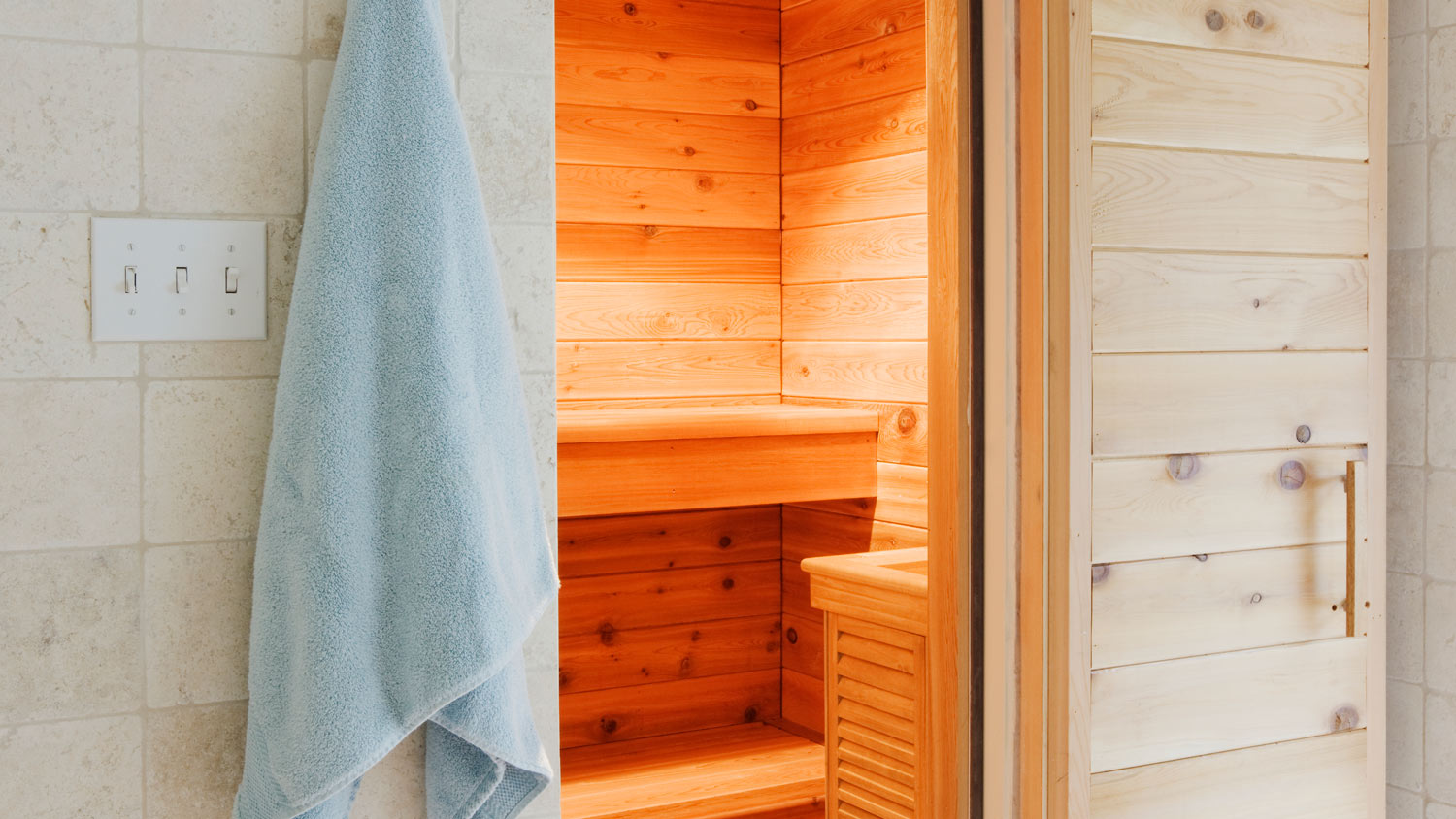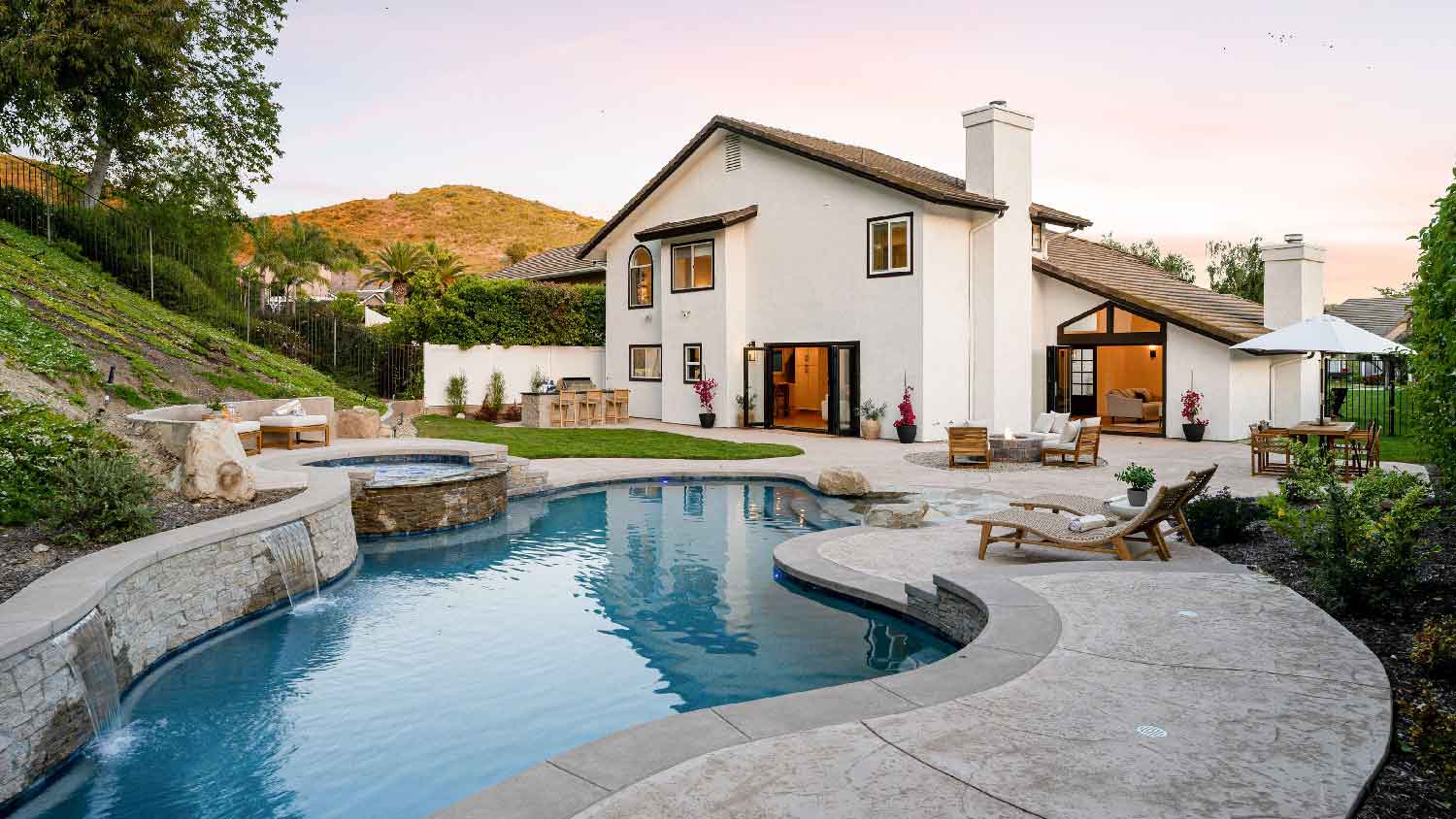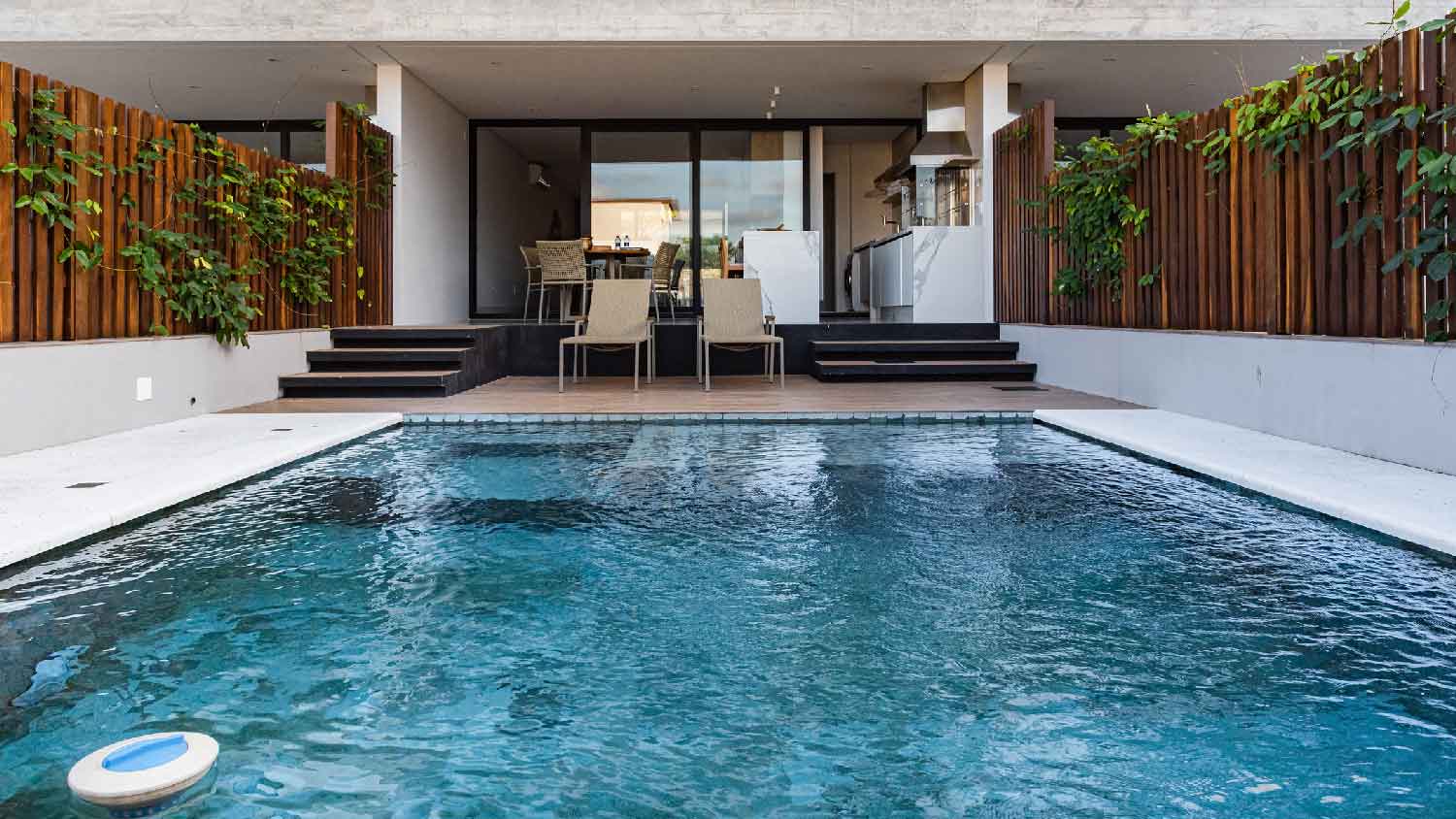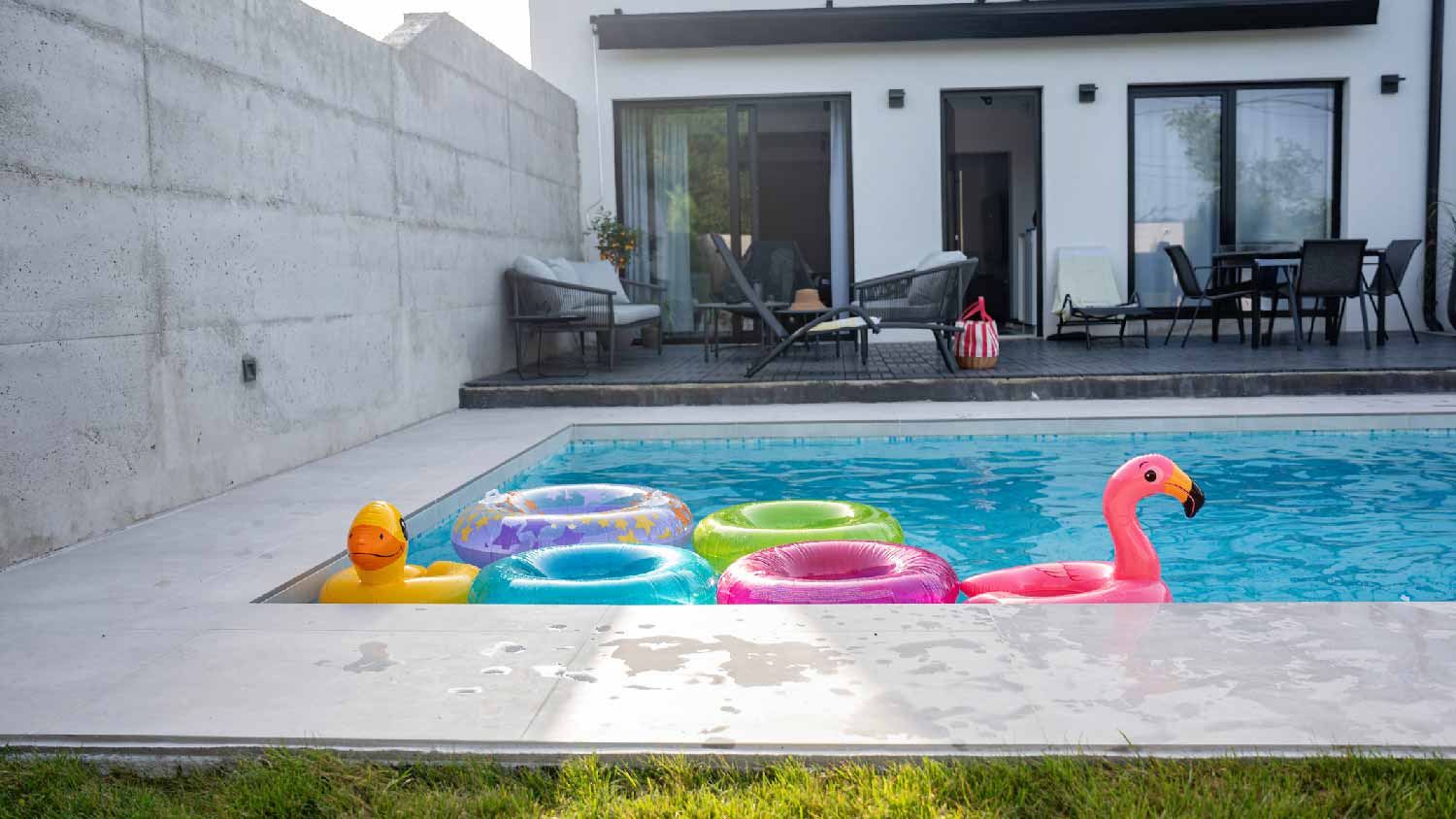
Discover how much installing a steam room costs, including average prices, key cost factors, and tips to save on your steam room installation.
You'd prefer to skip the hot tub chemicals, so find out if you can


Whether you love or hate them, hot tub chemicals are necessary for safe water.
You'll always need to use either chlorine or bromine for sanitizer.
There are ways to lower the amount of chemicals you need in your spa.
If you’re into eco-friendly living, you may wonder how to maintain a hot tub without chemicals. You might prefer a chemical-free lifestyle, or maybe you have sensitive skin. Here are all of the details about why you need hot tub chemicals and what you can do to reduce the need for them.
The short answer is that you can’t safely use a chemical-free hot tub. However, there are ways to reduce the amount of chemicals you need. This might not be the answer you’re looking for, but it all comes down to keeping you and your family safe.
The thing about hot tubs is that once you fill it up, you’re using the same water repeatedly. Sure, you’ll drain and refill the tub every three months or sooner, depending on the usage, but it’s not like a bathtub where you use fresh water every time you get in. Since you’ll use the same water for weeks or months, you must use chemicals to keep the water balanced, sanitized, and shocked.
You’d rather skip the chemicals, so why do you need them in your hot tub? Here are all the different hot tub chemicals and why you shouldn’t skimp on these hot tub maintenance costs.
Hot tub chemicals help keep your water balanced and sanitized. For example, your water should have a pH of 7.2 to 7.8. If it’s too high or too low, you’ll need a pH decreaser or a pH increaser. Water that’s too acidic or alkaline can cause many problems, like decreasing your sanitizer's effectiveness, corroded hot tub parts, and cloudy water. It can also lead to scale build-up and itchy or burning eyes.
Examples of things that affect your water pH include the natural pH of the water in your area (some areas have low or high pH water), natural contaminants from people like body oil and sweat, and natural contaminants from nature like leaves and dust. And when you shock the tub, you’ll lower the pH.
Chlorine is the most commonly used sanitizer, although some people use bromine instead. Chlorine levels should be 1 to 3 parts per million (ppm), and bromine levels should be 3 to 5 ppm. Maintaining these sanitizer levels is crucial to keeping your water safe to soak in.
As you or other people sit in the tub, your body oils, dead skin cells, moisturizer, shampoo, and the like will inevitably get into the water. Also, bacteria and microorganisms can thrive in warm environments. These germs can cause serious health risks in hot tubs if left unchecked. Some illnesses associated with poorly maintained hot tubs are Legionnaires’ disease, parasitic infections, skin infections, and even Urinary Tract Infections.
In addition to using a sanitizer, you’ll need to use shock. Chlorine shock breaks down natural contaminants like sweat and body oils. It also gets rid of any heavy chlorine smells. And most importantly, shock kills bacteria, preventing your hot tub users from getting diseases. You should use chlorine shock after heavy use, which might be after every spa session, depending on how many people use it regularly.
Non-chlorine shock, sometimes called oxidizer, helps any existing chlorine bromine in the water work better. You should use non-chlorine shock weekly.
If you don’t use chemicals in your hot tub, you’re putting people’s health at risk. Even though you might not notice anything wrong with the water with your naked eye, your water will soon have loads of bacteria and microorganisms multiplying like crazy. Eventually, you’ll notice your water getting cloudy, algae growth, and even floating bits. Over time, your hot tub parts may corrode and stop working.
Note that your untreated water doesn’t take long to turn sour, as bacteria growth can happen within two to three days.
If you’re not a fan of chlorine, you can use bromine instead. While chlorine kills contaminants, bromine breaks down bacteria. Chlorine works faster, but bromine lasts longer.
One common reason why people use bromine over chlorine is because it’s easier on your skin and doesn’t dry it out as much. It also doesn’t have an unpleasant smell like chlorine is known for. However, it doesn’t work well in sunlight, whereas sunshine doesn’t affect chlorine.
There’s one other chemical, called biguanide, but it’s not recommended. It works by breaking down the cell walls of bacteria, which sounds good in theory. However, you can’t use it alongside chlorine or bromine, and it doesn’t break down organic waste, like dead skin cells. And your tub will be susceptible to mold growth, including the dreaded pink slime, which is hard to eliminate.

While you will always need to use either chlorine or bromine, there are other options you can add to your hot tub to lower the amount of chemicals you need.
Most notably, you can opt for a saltwater tub or convert your existing spa into saltwater. Instead of adding chlorine to the water, you’ll add salt. The saltwater system converts the salt into chlorine. So, although you’ll still have chlorine in your water, it’s usually at lower levels than traditional spas.
Here are other potential add-ons to help you reduce chemical use in your spa. If you’re interested in any of these options, reach out to a hot tub installer near you:
Enzymes: Quickly break down organic waste
UV Sanitizer: Kills algae, bacteria, and viruses using UV rays
Ozonator: Adds ozone to the water, killing bacteria, viruses, and organic compounds that your filter missed
Ionizer: Adds metallic ions in the water, killing bacteria and contaminants
Other practical ways to minimize the amount of chemicals your water needs include rinsing off before jumping into the hot tub and regularly testing and balancing your water. Also, learn how to keep your hot tub clean and how to drain a hot tub. These things will help your water stay stable and minimize the amount of chemicals you need to add.
If you start noticing that you’re adding more chemicals to your water than you usually use, you may have a biofilm problem, your water might get too hot in direct sunlight, or you might need to shock your water.
From average costs to expert advice, get all the answers you need to get your job done.

Discover how much installing a steam room costs, including average prices, key cost factors, and tips to save on your steam room installation.

Discover the average hot tub maintenance cost, what impacts pricing, and how to save money. Get expert tips to keep your hot tub running smoothly all year.

We could all use some relaxation, but we don’t always have the budget. This guide will show you how much an in-ground hot tub costs—no matter the build.

Pools don’t hold chlorine if there’s organic matter, debris, or chemical imbalances. Keep reading to find out why your pool is not holding chlorine.

When you go for a dip in your pool, it should be refreshing, not slimy. Get answers to "why is my pool slimy" and find out how to fix it.

Why is there sand in my pool? Often, it’s due to a broken sand filter, but there are other common causes as well. Here’s how to identify and fix the problem.